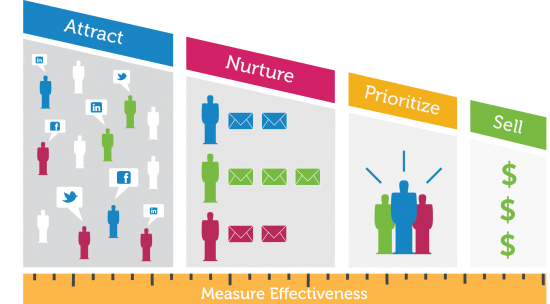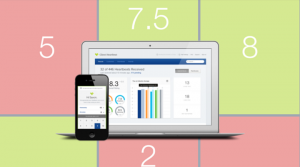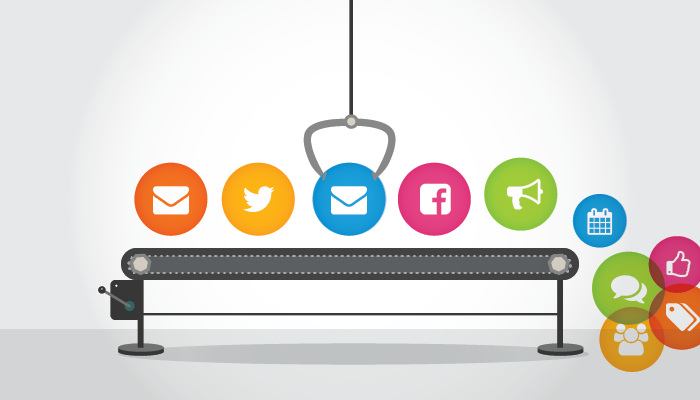Recipe for Failure: 7 Marketing Automation Mistakes that Will Cripple Your Business
You may not realize this, but people fully automate most aspects of their lives. Take your wardrobe as an example. You probably have a system put in place that shaves a few extra minutes off your mornings. Automation is a great way to scratch an itch.
The same holds true for automating a small business marketing. If used correctly, automation can help you optimize your marketing programs, adding value to your customers’ life and boosting your business. A recent study showed that 63% of companies that surpass their competitors use marketing automation. More than that, businesses that use automation get up to 53% more conversion rates.
How You (Yes, You) Can Use Landing Pages to Boost Your Lead Generation Rate
“Who, me? But, I’ve already tried everything, and I can’t get people to stay on my landing page for longer than a few seconds.”
You are not alone in this battle. Marketers are finding it more and more difficult to generate leads. The numbers are really depressing. According to Hubspot.com, 98% of website visitors never come back.
Ouch!
Will Facebook’s Dislike Button Affect Your Social Media Strategy?
Have you ever run into a terrible Facebook post and thought, “Gee, I wish there was a dislike button so that I can tell people how much I hate this.”
Well, as you’ve probably heard, planet Facebook is testing different ways for people to express shorthand emotions other than “Like”. The big question now is: will marketers give this idea the thumbs up?
How to Use Automation to Build Real Relationships at Every Stage of the Funnel
You must look at the sales funnel as a journey. This journey is made up of multiple campaigns that work hand in hand to earn leads and sales for your small business. These campaigns work together to build relationships with your prospects and to turn strangers into friends, friends into customers, and customers into loyal fans.
It sounds overly complicated, right?
3 Harsh Truths That Will Make You Better at Managing Your Reputation
Sometimes, getting smacked in the face with cold hard truths is the best way to see your mistakes. No one likes a slap in the face, but the harsh reality is that it’s the only way to grow. That is especially true in online reputation management where it’s easy to get fooled by vanity data and lose sight of what really matters to customers.
How to Find Influencers to Build an Engaging Presence on Social Media
Let’s be honest – everybody wants to boost their social media engagement.
Even if you are saying that you don’t care about likes, shares, comments, and other vanity metrics, you are secretly hoping that your work will be appreciated.
The unfortunate thing is that, no matter how hard you work to create awesome content, your posts have an embarrassing low reach. It’s hard to stay motivated when you realize your social media profiles are located in a sea of cats and selfies.
Insights from Over 50,000 Successful Businesses Reveal the Secret to Landing Page Optimization
Anyone who ever built a landing page knows all too well that the damn things are hard to optimize. After all, something as simple as the color of your CTA button can make or break your conversion rates.
It would be great if you had a science-backed way to create your landing pages, wouldn’t it?
Measure Happiness: 5 Customer Experience Metrics You Should Start Tracking
How great does it feel when hard work finally pays off? After months of dedicated effort, you managed to build a steady customer base. This step alone deserves a virtual pat on the back. But, before you pop open the champagne, you need to think your next step very carefully. If your customers aren’t satisfied with your product or service, your reputation might suffer. Not to mention that customers will go to the competition before you can say “client retention.”
Email Video Incorporation: The Marketing Automation Advantage No One Is Using
Love it or hate it, email marketing is still a powerful tool for business. It informs your leads about new products, services, or deals that are relevant to their needs so that they can move down the sales funnel. Unfortunately, in the era of 8-second attention spans, getting prospects to notice your email, let alone interact with it, is harder than ever.
How to Generate More Leads Using Basic Psychology: Three Tried-and-True Tips
You’ve only got one chance to make a good first impression on your landing page. Just think about it. Your landing page is your very first contact you might have with a potential new client – so make sure you don’t waste this chance because you might as well not get it the second time.
If this sounds scary, you need not worry – it is big, but there are several easy tips that can help you make sure you keep those conversions rolling. The secret lies in paying attention to what makes a client react in a way that is of benefit to your small business and it all narrows down to understanding and putting to practice basic psychology tips about human behavior.












